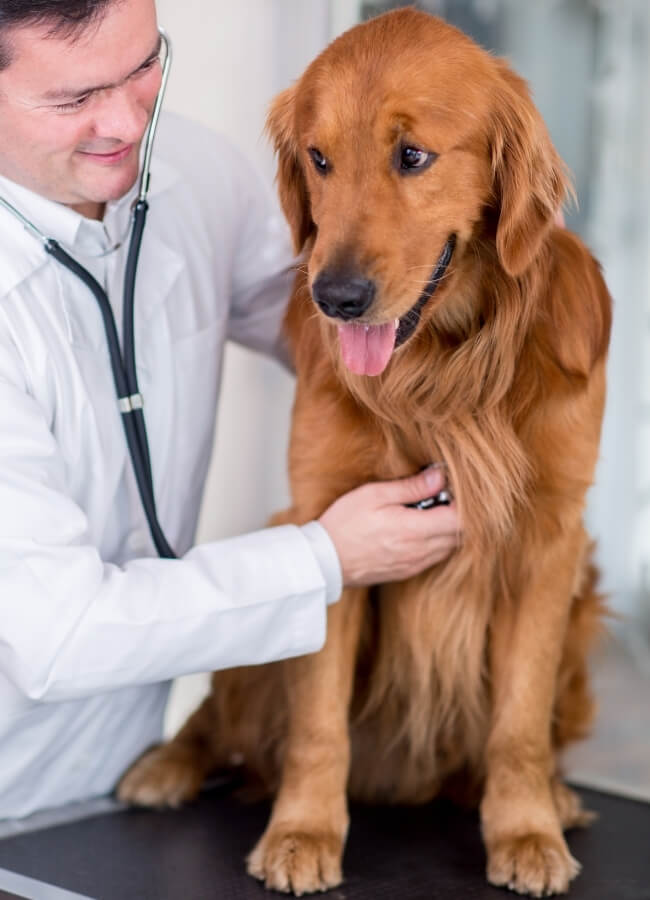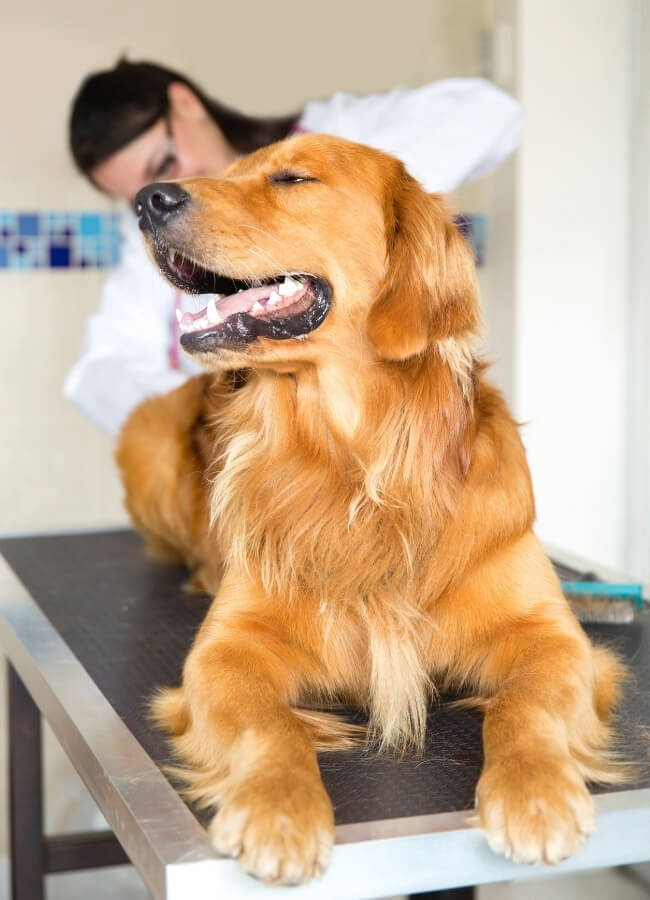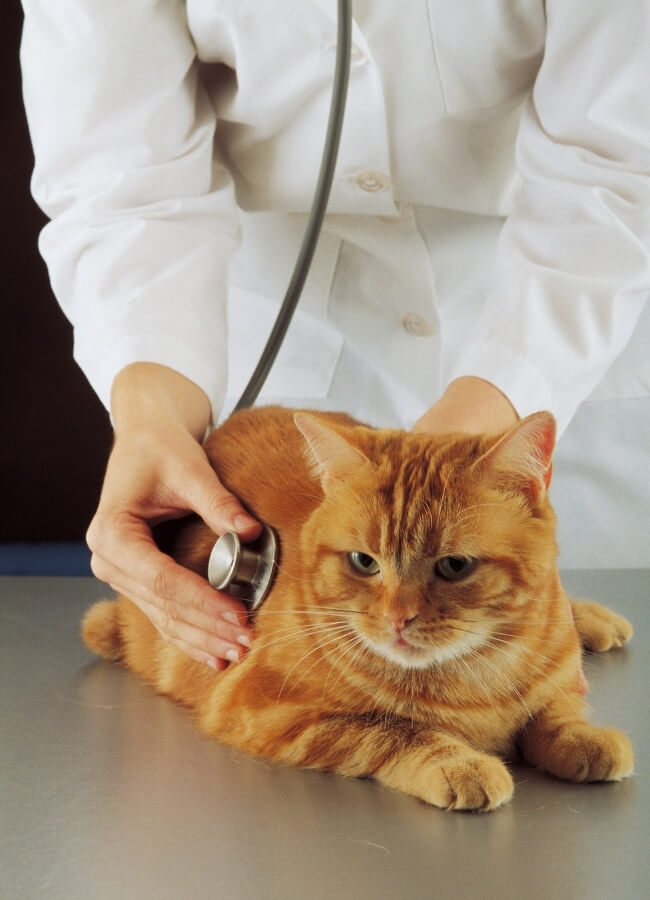Diagnostic Testing
For more information on diagnostic testing, please read below.
Diagnostic Testing Services

Radiology
An X-ray (radiograph) is a non-invasive diagnostic test that aids in diagnosing and treating medical conditions, such as discovering a foreign body, examining a potential fracture, or diagnosing pneumonia. Imaging with X-rays involves exposing a part of the body to a small dose of ionizing radiation to produce pictures of the inside of the body.
Our digital machine delivers images in seconds and offers lower exposure to radiation. Our veterinarians can then review these pictures and electronically send them to board-certified radiologists for consultation and review if needed.

Wellness Blood Work
Wellness blood work includes comprehensive chemistry panels as well as complete blood cell counts. This testing examines the size and quantity of the various blood cell types and gives us information on electrolytes and organ function.
The information that is provided gives us baseline levels to work from for your pet when they are healthy. It can also catch issues such as anemia, electrolyte imbalances, decreased organ function, or infection. Wellness blood work is an important diagnostic tool to detect potential problems such as kidney disease or diabetes before they become too severe.

Geriatric Blood Work
As your pet ages, checking their blood work becomes even more important. They are more prone to issues such as kidney or liver disease, which can become very serious very quickly.
We recommend blood work for your senior pet at least twice a year. This allows us to keep a close eye on their organ function and overall health so we can catch diseases or infections quickly.

Urinalysis
Urinalysis is a type of test that checks for levels of specific chemicals within your pet’s urine. Abnormal levels of certain chemicals can be a sign of particular illnesses. The urinalysis screens for imbalances that can be an indication of:
- Kidney Disease
- Kidney Infections
- Bacterial Infections
- Urinary Tract Disease
- Diabetes Mellitus
- Diabetes Insipidus
- Urinary Bladder Disease
- Auto-Immune Disease
- Cushing’s Disease
- Prostate Disease
- Hepatitis
- Liver Conditions

Parasitic Analysis
Parasitic analysis includes the examination of your pet’s blood or feces for signs of parasites. Most parasites shed their ova (eggs) inside your pet’s intestinal tract, meaning they can be found in your pet’s feces.
Fecal analysis allows us to find these eggs and diagnose a parasitic infection. Sometimes, live worms may also be found. Regularly checking your pet for parasites is important, as many are zoonotic (meaning they can be passed from pet to human), and large infestations can make your pet very ill.

Cytology and Biopsy
Cytology is the microscopic examination of cell samples. It is often used to diagnose growths or masses, assess bodily fluids or any abnormal fluids that may accumulate, such as around the heart or lungs. There are many ways to collect these cells, but the most common is through fine needle aspiration. This is the insertion of a needle into the area or mass to gather the cells, then spreading the cell sample onto a slide for evaluation. Cell samples can also be acquired by gently scraping the skin, pressing a slide to an ulcerated area, swabbing the area with a cotton swab, or using water to lavage and internal area (such as the nose or throat) and collect cells.
A biopsy is the surgical removal of a tissue sample from the suspected lesion or growth. The biopsy is then processed and examined under a microscope. There are multiple ways to collect a sample, all of which usually involves a local anesthetic.
An entire mass or growth may be removed through surgery and sent in for examination in some cases. This is especially important in suspected cancerous tumors to ensure the entire tumor was removed, reducing the chance of the cancer returning.

Heartworm and Tick-Borne Disease Testing
Using just a few drops of blood, we are able to screen your pet for four potential infections using a test called a 4DX. This test takes only a few minutes and can show the presence of heartworms, Lyme disease, anaplasmosis, and Ehrlichiosis.
If your pet does show as being positive for one of these infections, more testing may be needed to confirm infection.

Allergy Testing
Pet allergies are a common problem, but symptoms associated with animal allergies can also be an indication of more serious pet health conditions. When necessary, our veterinary staff will perform blood work and other tests, such as food trials, to determine the cause of your pet’s discomfort.
Itchy skin is the most common allergic reaction in pets, although oral nodules, lip ulcers in cats, and repeated ear infections in dogs can also be signs of allergies. Common signs of allergies in dogs or cats include continuous scratching or licking as well as biting, chewing, or rubbing a part of their body.
Since pet allergies can be caused by any one of many factors, our trained staff will rely both on discussions with you about your pet’s symptoms and Heska test results. Pet allergies are usually not life-threatening, but they do reduce your pet’s comfort and quality of life. Fortunately, they are manageable, and your pet can return to good health. We recommend allergy treatments well before allergy season to help pre-empt symptoms.

Ultrasound
Ultrasound is an incredible, non-invasive diagnostic tool. This tool uses a probe that emits high-frequency sound (ultrasound) waves to create a picture of what is inside your pet’s body in real-time.
This allows us to examine blood flow, intestinal health, organ size, and organ function, or even find bladder stones.

